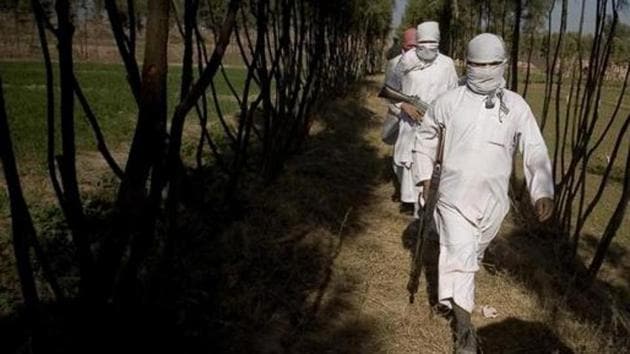The worrying rise of local militancy
The number of local militants has steadily gone up. According to police records, 66 of them joined the militant ranks in 2015. The number went up to 88 in 2016, 126 in 2017 and 196 in 2018.
Mohammad Salman Khan and Shabir Ahmad Dar deserted the Jammu and Kashmir police’s counter-insurgency wing to cross over to the other side on June 5. The special police officers (SPOs) left Pulwama’s district police lines with their automatic weapons and joined Pakistan-based terror group Jaish-e-Mohammad four months after it carried out one of the deadliest attacks in Kashmir on February 14 that left 40 paramilitary troopers dead.

Within hours of their desertion, security forces raided a house after being tipped off about the duo’s presence at Panjran Lassipora, around 12 kilometres from the police lines. In a night-long exchange of fire, the SPOs were killed along with two other militants holed up in the house.
Khan and Dar represent a continuing trend of Kashmiri youths joining the militant ranks. The recruits have come from various professional and economic backgrounds. The two belonged to Pulwama, which has emerged over the last three years as a militant hotbed. They had joined the Jammu and Kashmir police in 2016. Khan, a graduate, came from a modest background. His father is a farmer. Dar came from a well-to-do family. “Dar’s father is an officer in J&K’s industries department and owns apple and almond orchards… When he joined the police for a meagre salary, everyone was surprised, even his parents. A day before joining militancy, he [Dar] came home for Eid and had lunch with the family. Nobody knows why he joined and then left the police to join militants,’’ said a relative.
The trend started in 2015 when 15-year-old Burhan Wani dropped out of Class X and joined the home-grown militant group, Hizbul Mujahideen. He posted his pictures on social media that showed him carrying an AK-47. Many Kashmiri youths have since followed in Wani’s footsteps; so much so that local militants have started outnumbering foreign terrorists for the first time since 1989 when the insurgency in Kashmir began.
According to police records, 66 of them joined the militant ranks in 2015. The number went up to 88 in 2016, 126 in 2017 and 196 in 2018.
At least 45 youths have joined militant organisations in the first five months of this year, the records read. At least seven of them were pursuing bachelor’s degrees and one a master’s in technology. At least 61 youths had joined militancy in April and May last year alone. Six youths have joined militant ranks this month in Pulwama, Baramulla and Kupwara even as the police have claimed to have convinced two of them to quit militancy.
According to a police statement on Tuesday, two youths from Pulwama have returned to the mainstream with the help of their families and community leaders. Officials said that this year more than 10 youths have left the militant ranks.
Militants have also begun to find recruits in north Kashmir, where Junaid Farooq, who is from Baramulla, is the latest to join their ranks in June. A post-graduation student, Farooq joined the Hizbul Mujahideen five months after the district was declared free of local militants.
On June 18, 19-year-old Adnan Ahmad Channa’s picture showing him carrying a gun went viral days after he disappeared from Baramulla’s Arampora area.
In March, Peoples Democratic Party (PDP) leader Zaffar Manhas’s nephew, Kamran, 20, who was pursuing a B Tech, joined the militant ranks. “My nephew had studied at Sainik School, Manasbal, till Class X. I am surprised by his decision,” said Manhas.
A Kashmir university assistant professor, Mohammad Rafi Bhat, was killed in Shopian a day after he joined militancy in May last year. A police officer said eight people from his force, too, have joined militancy over the last five years and insisted it was not a “big development”.
Political analyst Gowhar Geelani blamed the absence of any dialogue for the trend. “All communication channels are closed and both... [separatists] and ...Unionist forces have failed to strike a chord with the youths.” He said New Delhi has continued with its “we-will-not-bend and its militaristic and muscular Kashmir policy”.
Muneer Ahmad Khan, an additional director general of police, blamed social media for the trend, mostly in South Kashmir.






